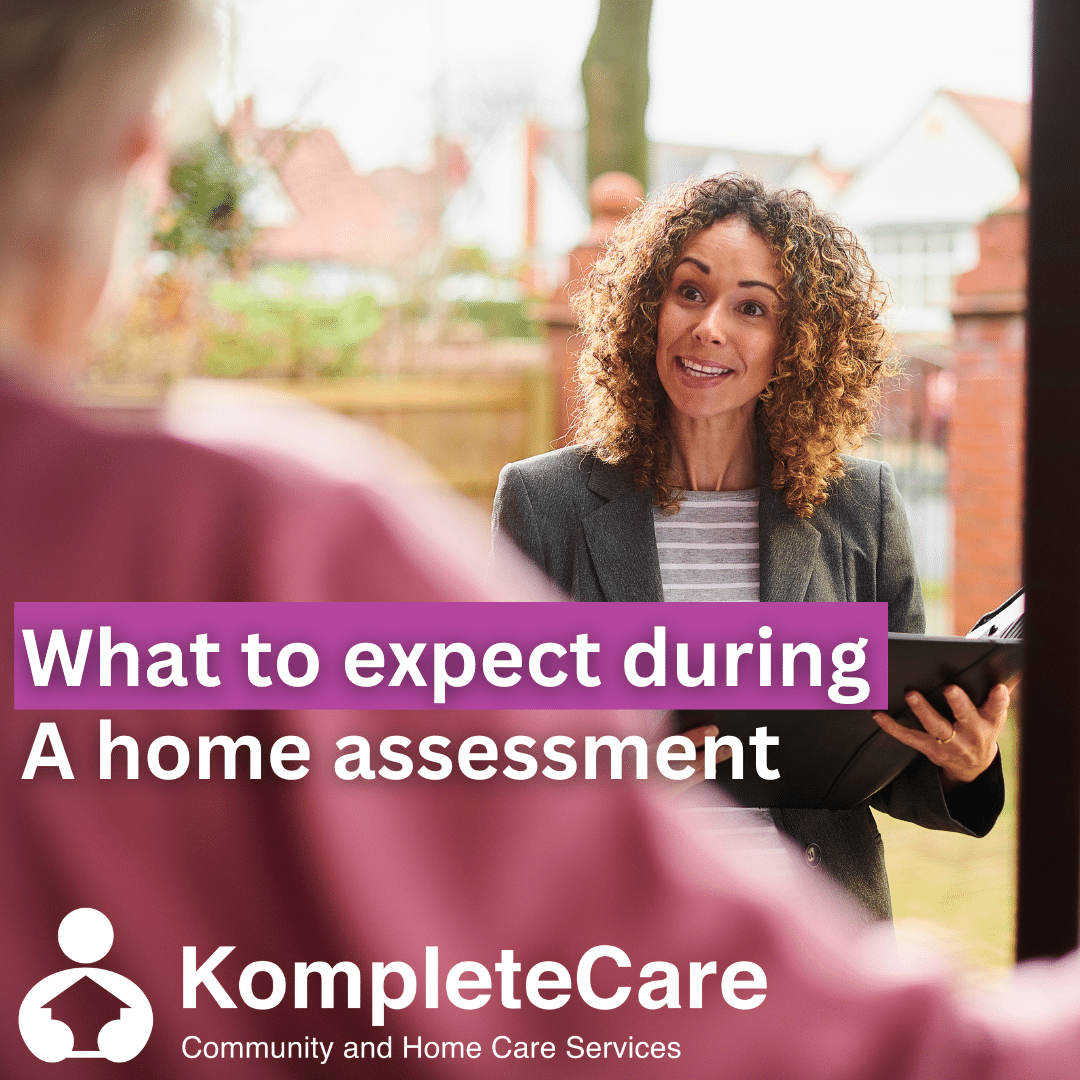For those experiencing challenges with their mobility, safety, or independence, a home assessment is a critical part of care planning. Usually conducted by an Occupational Therapist, these assessments provide insight into a person’s living environment and daily functioning. This process not only identifies potential risks and barriers, but also forms the basis for tailored interventions, such as assistive equipment, home modifications, or support services.
Additionally, these serve as critical evidence to support funding applications through programs like the National Disability Insurance Scheme (NDIS), and Home Care Packages (HCP). We outline what to expect during an assessment and explain how the findings are used to facilitate access to appropriate supports.
Commencing the assessment
Home assessments typically begin in a common area, such as the living room. The therapist starts by explaining the purpose of the visit, ensures informed consent, and encourages an open, collaborative approach throughout the process.
Examples of guiding questions include:
- ‘Would you be comfortable walking through your home with me?’
- ‘Can you show me the rooms you use most frequently?’
- ‘Have you experienced any recent falls or near misses?’
While engaging in these discussions, the clinician simultaneously observes how the individual mobilises within the environment. Notable indicators—such as furniture for balance, abandoning mobility aids in tighter spaces, or struggling to rise from chairs—offer critical information about functional limitations.
The bathroom environment
Bathrooms are among the most hazardous areas within the home. The Occupational Therapist will assess the layout, the presence (or absence) of safety features, and the individual’s ability to use the space independently.
Questions may include:
- ‘Are you confident stepping into the shower or bath?’
- ‘Do you feel safe using the toilet, especially at night?’
- Are there areas you hold onto for support?’
Common observations include the use of unstable fixtures (e.g., towel rails or shower screens) for balance, difficulty stepping over shower hobs, and signs of urgency or incontinence. These findings often substantiate the need for bathroom modifications, such as grab rails, raised toilet seats, or slip-resistant flooring.
Bedroom function
The bedroom assessment focuses on how the individual manages tasks—such as getting in and out of bed, dressing, and accessing the toilet during the night. These insights help determine the need for equipment (e.g., bed rails, over-bed poles), environmental adjustments, or personal care assistance.
The therapist may explore:
- ‘How do you typically get in and out of bed?’
- ‘Do you wake during the night to use the toilet?’
- ‘Is there sufficient lighting for safe movement at night?’
Indicators such as dropping onto the bed, pulling on furniture for support, or cluttered pathways point to increased risk and diminished independence. These factors are key when justifying the need for assistive devices or care services through formal funding pathways.
Kitchen function and meal preparation
The kitchen environment is assessed for safety, accessibility, and the individual’s ability to prepare meals or drinks. This includes observation of task sequencing, fatigue levels, and access to frequently used items.
Discussion points may include:
- ‘Are you still preparing meals as you used to?’
- ‘Do you find it difficult to reach certain cupboards or use appliances?’
- ‘Do you require support with grocery shopping or meal preparation?’
The therapist may observe signs, such as difficulty standing for extended periods, visible strain when lifting the kettle, or challenges in navigating the kitchen layout. These findings can support recommendations for meal delivery services, adaptive kitchen tools, or in-home assistance.
Entrances and outdoor access
Outdoor areas, including access paths, garages, and gardens, are also assessed to ensure safe entry and exit from the home. Environmental features such as uneven steps, lack of railings, or overgrown paths can pose significant risks.
The clinician may ask:
- ‘Which door do you use most frequently?’
- ‘Are you able to get to your mailbox, garden, or car safely?’
- ‘Have you experienced any falls outside?’
Observations of instability, breathlessness, or non-use of mobility aids outdoors contribute to a holistic understanding of the individual’s functional capacity and may inform funding requests for ramps, handrails, or outdoor modifications.
Translating observations into actionable recommendations
Throughout the assessment, the therapist documents both verbal responses and physical observations. This information is synthesised into a formal report detailing:
- Functional limitations,
- Environmental risks, and
- Required supports, equipment, or modifications.
These reports are essential for NDIS plan reviews, initial access requests, or myAgedCare assessments, providing clear justification for the level and type of support required.
A home assessment is a clinically driven, person-centred process that not only enhances safety and autonomy, but also provides the evidence required for accessing supports. Through collaborative discussion and careful observation, these assessments enable tailored interventions that align with the individual’s goals and funding pathways—ensuring people can continue living safely and independently in their homes for as long as possible.
At KompleteCare, we work in close partnership with qualified health professionals to ensure our clients receive comprehensive and timely support. Our team is committed to coordinating the right services, assisting with funding applications, and helping individuals implement recommendations. Through this collaborative approach, KompleteCare supports individuals, and their families, navigate care with confidence, dignity, and peace of mind.
If you, or a loved one, requires in-home support, contact our friendly team today on (08) 8265 5696 or fill out an online enquiry form via the website.









